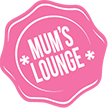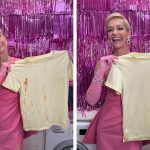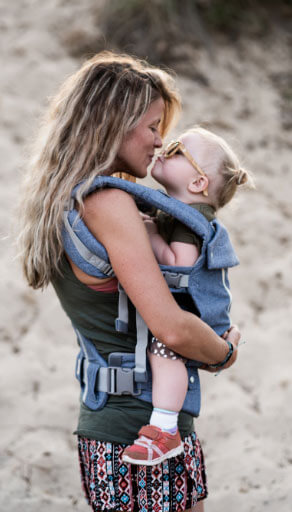Remembering Julia
![]()
Image source
I first met this special little girl when she was just 4 years old. With her bright blue eyes, cheeky smile and determination she had me wrapped around her little fingers in no time. Julia required speech and language intervention and I was the lucky therapist to work with her, initially within her early intervention program and later on in my private practice. Julia was an absolute delight. For sure, she could be stubborn at times and she was especially good at negotiating her way out of certain tasks, but even when the work was challenging she always gave it a go and tried her very best. Julia had a receptive and expressive language delay, having been diagnosed with epilepsy at the age of 10 months resulting in numerous hospitalisations before she was even two years of age. Her epilepsy became manageable on medication and she developed into a bright and capable little girl.
Julia was that type of child who you couldn’t help but love. She was funny, engaging, determined and I loved seeing her run up my steps on a Saturday morning often with some sort of sparkly make up or nail polish on. Sadly in January 2009, shortly after her 8th birthday, Julia had a massive epileptic seizure and despite all medical efforts she passed away. Gathering to celebrate her life was an incredibly difficult and sad time for everyone not the least her amazing brave parents and little brother. Many people wore purple and purple balloons were released, with purple being the colour used worldwide to help raise awareness of epilepsy.
What is epilepsy?
Epilepsy is a common serious brain disorder which is often referred to as a seizure disorder where seizures are unprovoked and recurrent. Seizures occur when sudden bursts of electrical activity in the brain disrupt the normal patterns of nerve cells carrying messages between the brain and the body. Epilepsy is made up of different types of epilepsy disorders, which have their own set of features.
What causes the seizures?
In many cases the cause of a seizure cannot be determined, even though a full medical investigation has been completed. In other epilepsy syndromes, seizures will occur following certain triggers (eg. flashing lights) of particular precipitants such as febrile illness.
Who can be affected by epilepsy?
Millions of people are affected worldwide by epilepsy. In Australia, approximately 1 in 20 children will have a seizure of some form in their childhood (may be seen following a high fever), however approximately 1 in 200 children will have recurrent unprovoked seizures resulting in the diagnosis of epilepsy.
What are the types of seizures?
Seizures associated with epilepsy generally fall into two categories:
• Partial focal seizure – which arise in one part of the brain and affects the part of the body controlled by that part of the brain. (Conscious state not always affected)
• Generalised – which involve both parts of the brain and affect the whole body. (Conscious state affected)
How is epilepsy diagnosed?
Diagnosing epilepsy or even determining if your child has had a seizure can be extremely difficult. Seizures can look very different. In some cases if your child is having an absent seizure, you may not even notice it. If you are at all concerned it is recommended that you seek advice from an appropriate medical professional.
Your doctor will:
• take a detailed description of what your child’s seizure looked like . This is important as seizures are often so quick doctors may never see your child having one.
• take medical history
• discuss and observe your child’s development, learning and behaviour
Depending on the outcome of this your doctor may also recommend:
• Blood tests
• An EEG (recording of brain activity)
• A CT/MRI (pictures of the brain)
• Video E.E.G monitoring
Can epilepsy be cured?
There is no known cure for epilepsy; however it can be controlled by antiepileptic medication. In some cases with children, they will not need medication as they may only have one seizure. In approximately 30% of cases, however, medication does not effectively control the seizures. In some of the most severe cases, surgery may be recommended. In other cases with children, vagal nerve stimulation and/or the Ketogenic diet may also be considered following discussions with the family and professionals involved. Certain epilepsy syndromes also seen in childhood, however, are not lifelong and are primarily confined to that stage of the development.
Even though many years have passed, it still seems like yesterday when I met this beautiful little girl. I recently had the pleasure of attending a morning tea held in “Julia’s orchard” at her local primary school to mark the anniversary of what would have been her graduation from primary school. It was a wonderful opportunity to gather with family and friends to celebrate her life and remember Julia.
Much of the information for this article was gathered from content written by epilepsy Australia and The Royal Children’s Hospital, Melbourne. For further information about epilepsy or should you wish to make a donation to help fund research into this condition please visit www.epilepsyaustralia.net
Kath Keiper is the co-creator of three beautiful children who while driving her crazy, make her laugh everyday. Having been a paediatric speech pathologist for over 15 years, Kath has also spent her life dedicated to helping children and families. Through her career Kath has been fortunate to speak at varying events such as the World Autism Congress and Speech Pathology Australia. Being able to make a positive difference in many children and families lives has always been Kath’s highlight. Her love of helping children, making a difference and performing, have also been the driving force behind the creation of her first DVD for children “Can you sound like me?”
Visit www.chewchewchatter.com.au










